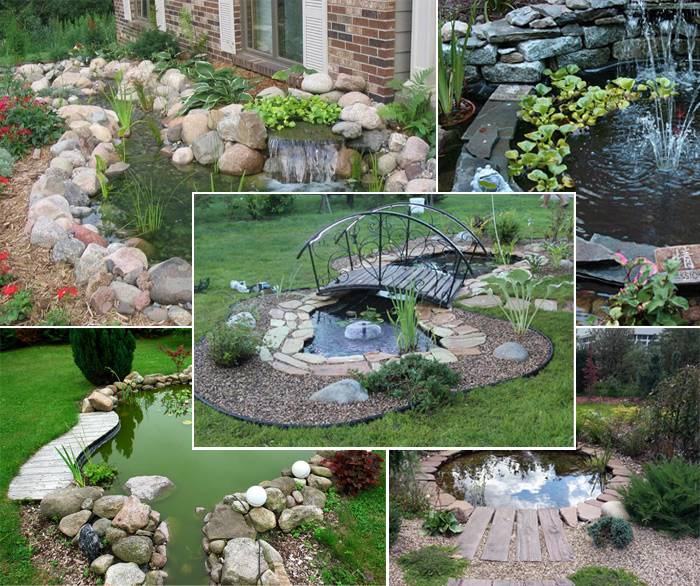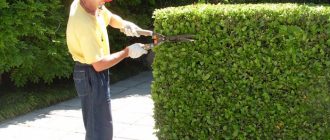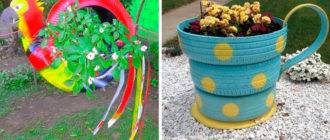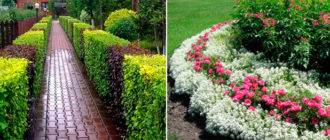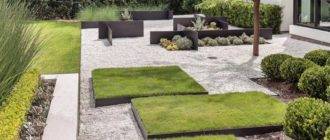You can build a beautiful pond on almost any site. Moreover, often only materials at hand are used for this. But in order for the reservoir to serve and please the eye for a long time, a few tips should be taken into account. How to avoid mistakes? Let's figure it out.
Wrong location
The pond should not be located on a hill, it will not be clearly visible. A body of water arranged on a hill or inside an earthen rampart will look very unnatural. It can be placed in a depression, but there are some nuances here too. Rain, water from melted snow and ice, during irrigation, soil, fertilizers and garden chemicals should not be washed into it.
The pond will become one of the central elements of landscape design, catching the eyes of guests. Therefore, it is worth taking care of a good background.
If the groundwater is close to the surface, it can be difficult to create a man-made reservoir. Due to the pressure of water from the opening sources, the film laid on the bottom will constantly rise. In such a situation, it is necessary to build a natural drainage pond.
Read the article, how to make a pond in your country house step by step.
Incorrect depth and shape
In our latitudes, it is impractical to make compact reservoirs with a depth of more than 1 m.In order for water lilies, fish, etc. to successfully overwinter, a depth of about 80 cm will suffice.But at least 2/3 of the area, the depth should be within 60 cm.If you live in a region with a harsh climate, it makes sense to make a deeper pond.
The form should be as simple as possible. There is no need to make an unnatural broken coastline. There will be little beauty in such a reservoir. For a small pond inside the paving, in most cases an oval or rectangular shape will be more suitable.
Excessively steep walls
The maximum permissible wall slope is 600. At the edge and on loose soils, this figure is 500. The bottom should be made slightly stepped (terracing). This is necessary for the normal functioning of aquatic plants. It will be convenient for a person to move along it.
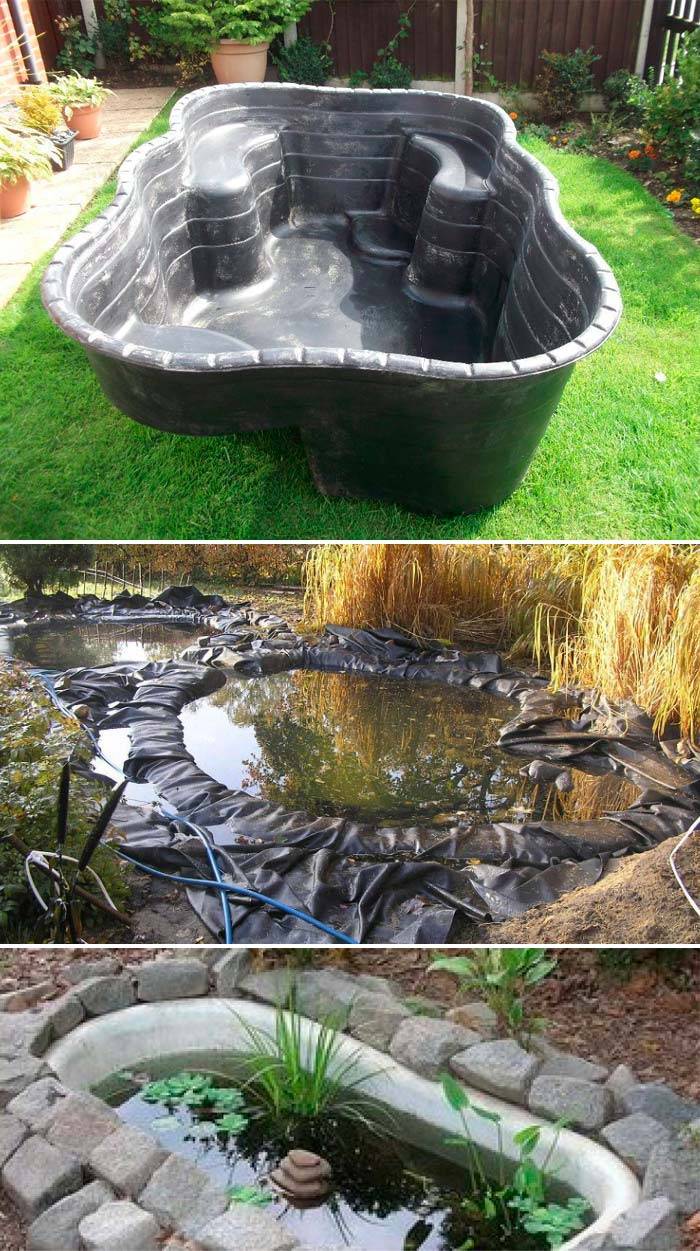
Mistakes in decorating the shores
When building a pond with your own hands, you should properly lay the film. It should not be just above the ground, pressed by stones. If the water level drops even slightly, the film will be visible, which is far from aesthetically pleasing. Along the perimeter of the entire upper edge, it is necessary to build a terrace with a depth of about 10 cm. Lay it with stones, adding dumping. It will be appropriate to place plants that require a lot of moisture here.
If there are no suitable stones on the ground, you can use flat stones, which are usually used for paving. Laying with spherical stones should not be done in one row. Otherwise, you will get a beads effect, which does not look the best. Boulders of approximately the same size should not be stacked in a row.
The stones should be the same in texture and color, but different in size. The smallest ones can also be used. The width of the coastline should vary along the entire perimeter. Somewhere one stone is sufficient, and in another place several pieces can be placed. Certain sections of the coastline can be laid with other material, for example, gravel. The main thing is that its color is not very different. It is appropriate to plant large-leaved and ground cover plants near the stones.
Excessive decoration
Home ponds are often decorated with all kinds of figurines, lanterns, bridges, fountains, waterfalls, boulders, artificial plants, pots, etc. These are valid items, but there must be an appropriate number of them. All details must be harmoniously combined with each other.
The use of a large number of decorative elements of different styles at the same time will lead to an overload of landscape design. It is better to choose one decorative element that will become the highlight of the entire reservoir.
Using unsuitable plants
Plants must be present both inside and around the pond. But, not all of their types are suitable for reservoirs. Only use plants that will survive the local weather conditions. Observe the proportionality of the sizes.
It makes no sense to plant trees and tall coastal plants around a compact pond. Against their background, the reservoir will turn into an awkward puddle. Excessively bulky water lilies will completely tighten it, the water mirror will completely disappear.
Give preference to a small-growing plant of "marsh appearance" (cereals, small sedges, hosts, ferns, berns, marsh marigold, marsh calla, susak, three-leaf watch). There are many varieties of water lilies, some of which are very small. They are ideal for home ponds.

Any bushes and trees should not be planted near a reservoir with a bottom covered with a film. They sprout underground, which can cause damage. This also applies to cereals with sharp roots (cattail, reed, reed, headhead).
You can take vegetation from natural reservoirs. But, before disembarking, they should be thoroughly rinsed and quarantined. Copper sulfate treatment is highly recommended. For this, a container made of copper or glass is suitable. Stir 3 g of copper sulfate in 10 liters of water, and leave in the solution for about 3-5 hours. Then rinse with clean water.
When buying plants in specialized stores and markets, you should carefully study them. Not all varieties can survive the winter in our latitudes. For example, small cattail, rose pistia (for aquariums), some tropical species of water lilies (have blue and lilac colors), tropical water hyacinth, calla lilies do not take root in our country.
Excessive amount of living creatures
In just a few weeks, an open pond will be filled with the larvae of all kinds of insects. Many of them are predatory: dragonfly, water meter, water scorpion bug, swimming beetle, smoothie, ranatra. Birds will appear on the site. Since many insects are carnivorous, there is no need to fear an increase in the mosquito population due to the pond.
However, fish should also be present in the reservoir. Aquarium species will not work. They require special care, which is very difficult to carry out in a makeshift pond. It is especially difficult to create suitable conditions for them for the winter.

Vibrantly colored fish can attract crows. Therefore, if possible, you should give preference to those that are found in local water bodies: crucian carp, top water, bleak, etc. They can easily endure the winter. They do not need to heat and aerate the water. Algae and all kinds of insects will become food for these fish.
In the pond, you can run a sleeper goby, which is often found in local lakes and rivers, and is considered a "trash" fish. However, it is worth considering that he requires a large amount of food and leads an aggressive lifestyle. You shouldn't add it to peaceful fish. If there are only rotans in the pond, their number should not be large.
Do not immediately launch fish into a pond. After its arrangement and filling with plants, you need to wait 2-3 weeks for a biological balance to be established.
Too many fish should not be launched! Molluscs (coil horn and pond snail) are out of place in a home pond. They can damage important vegetation. It makes no sense to place pearl barley and toothless in a homemade reservoir, they need running water.

